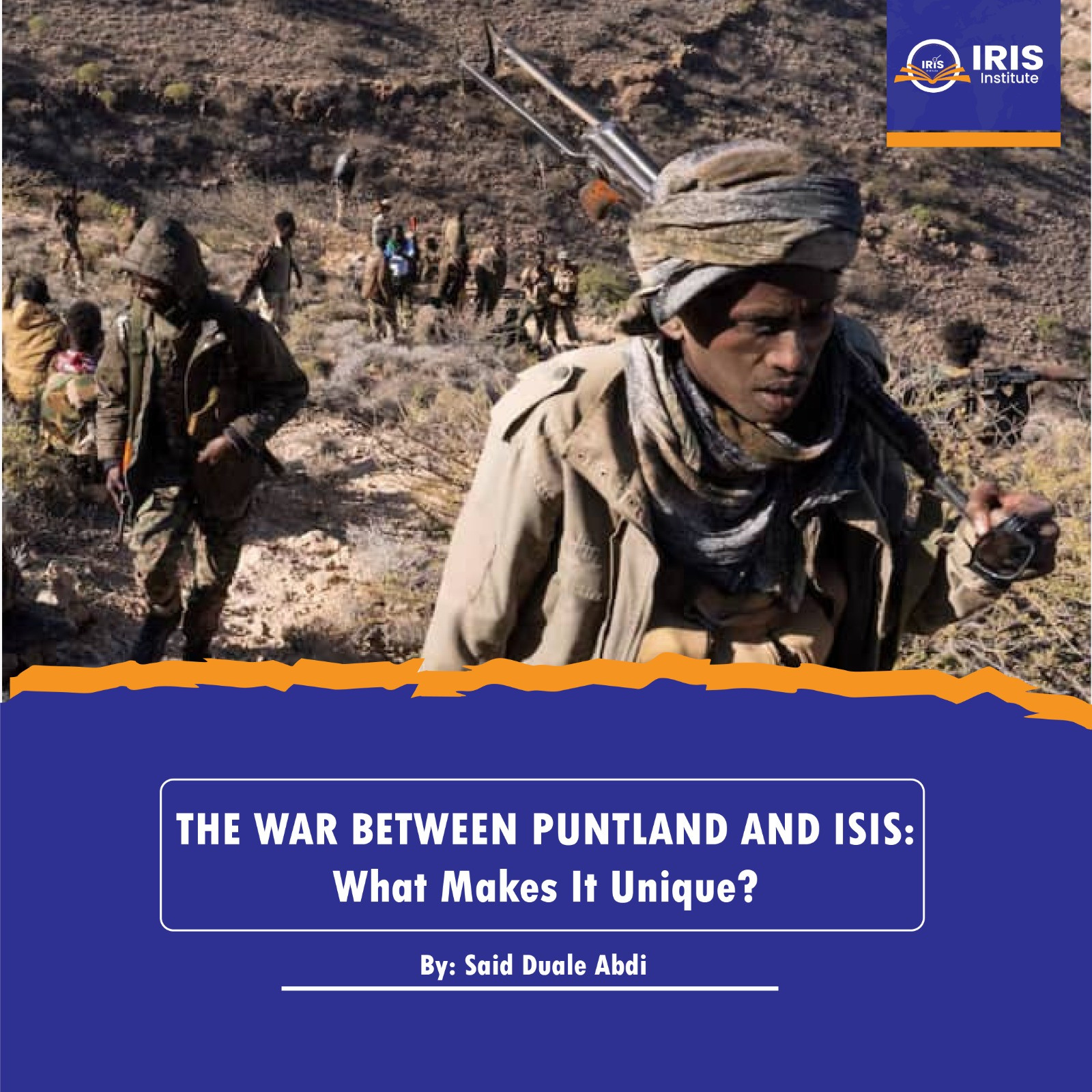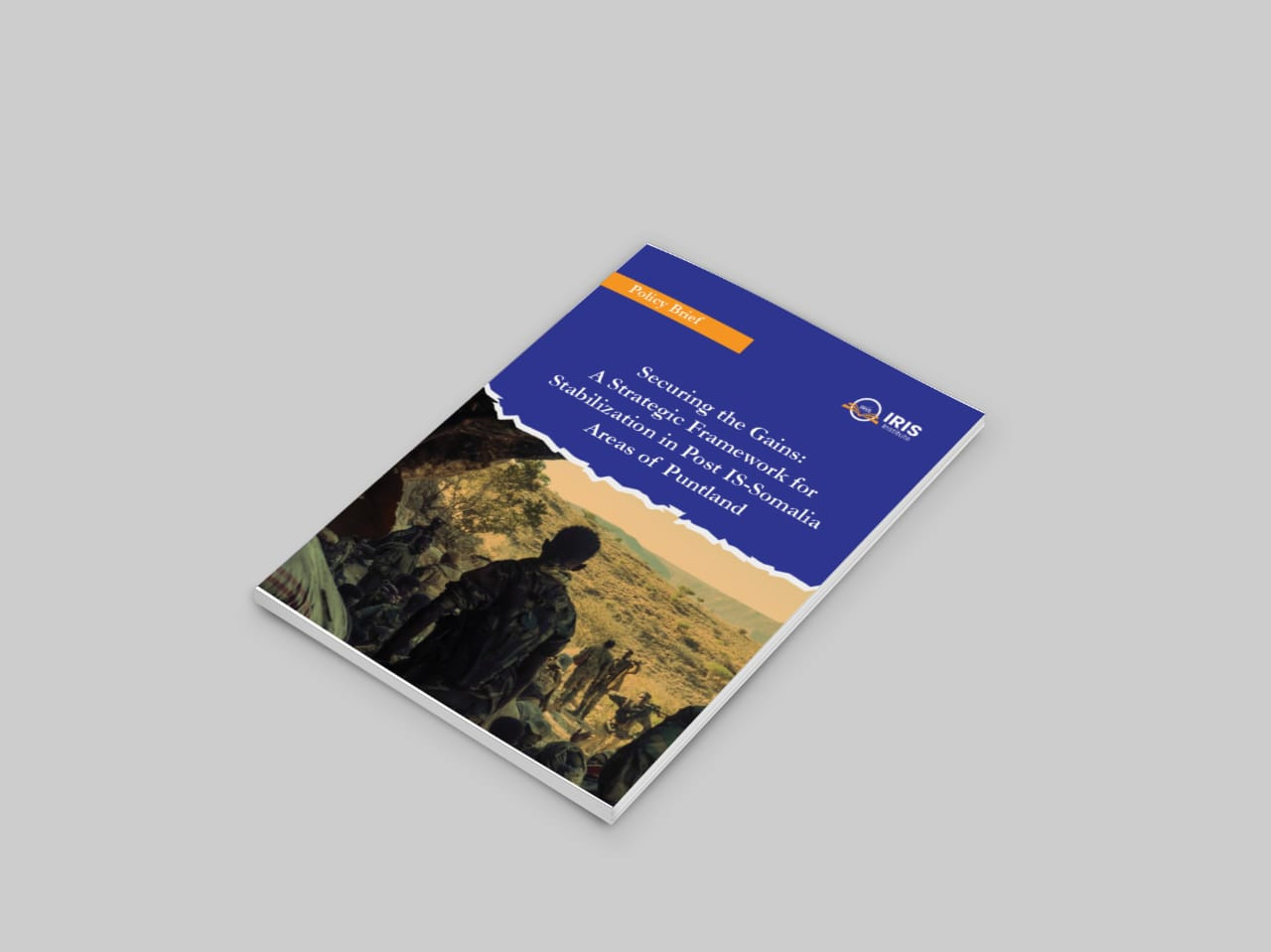
THE WAR BETWEEN PUNTLAND AND ISIS: What Makes It Unique?
Introduction:
Historically, the conflict between the people of Puntland and Islamist groups
is nothing new. For the past 30 years, the communities of northeastern
Somalia—what is now Puntland—have been caught up in multiple clashes with both
Somali and foreign Islamist groups.
Since 1992, Puntland has seen
several significant battles. In 1992, the SSDF (Somali Salvation Democratic
Front) fought against Al-Itihaad Al-Islami, which at that time had captured
several towns, including the port city of Bosaso. That conflict eventually
ended in a negotiated agreement that led to Al-Itihaad laying down its arms.
In 2011, Puntland forces clashed
with Al-Shabaab when the group launched a heavy attack on a military camp in
Karin, near Bosaso. Although Al-Shabaab was not entirely wiped out, they were
pushed out of the areas they had seized and were cornered in the Cal Madow
mountains.
In 2016, Al-Shabaab again landed
fighters by boat on the shores of Garacad. Puntland forces engaged them in
fierce battles in Suuj and Garmaal, eventually defeating the militants, killing
many, and capturing a lot of the its members.
By 2024, Puntland launched a major
offensive against the Islamic State (ISIS) group, known locally as Daacish.
Although ISIS has fewer fighters compared to Al-Shabaab, it’s a global
organization with superior training and equipment. Moreover, it has entrenched
itself in rugged mountain and gorge terrain that’s extremely difficult to
penetrate.
So, what has made the Puntland-ISIS
war particularly significant within Somalia?
Let’s explore the key reasons that set this conflict apart.
1. Comparison with Southern
Somalia’s Conflict:
When comparing Puntland’s fight against ISIS with battles in southern Somalia,
one notices that Puntland has made remarkable military progress. Since the
offensive began in late December 2024, Puntland forces have continuously
advanced toward ISIS’s main base. Despite fierce battles, Puntland has not lost
ground, bases, vehicles, supplies, or soldiers to the enemy, nor has it been
forced to retreat. Importantly, Puntland’s success has come with minimal
international support, aside from occasional targeted airstrikes by foreign
governments.
By contrast, the Somali Federal
Government (SFG) forces in the south often struggle to maintain gains, with
Al-Shabaab frequently recapturing towns or seizing military supplies and
equipment. Despite receiving substantial international support—including
training, arms, finances, and logistics—SFG forces have struggled to deliver
sustained victories.
2. Sacrifice and Courage of
Puntland’s Forces:
Puntland’s progress against ISIS owes much to the extraordinary bravery of its
soldiers. For example, when ISIS first attacked Puntland’s base in Dharjaale,
their goal was to overrun the base, destroy supplies, kidnap soldiers, and
assassinate or capture top commanders. They came prepared with 12 suicide
bombers, two vehicle-borne explosives, and well-trained assault teams for a
two-phase attack.
However, the Puntland soldiers put
up fierce resistance. They managed to shoot dead most of the suicide bombers
before they could detonate, while standing their ground despite intense
fighting. Although ISIS did manage to explode two vehicles, 12 of their foreign
fighters, some wired with explosives, were killed on the spot. ISIS failed to
achieve its objectives—capturing the base, killing officials, spreading fear,
and using media propaganda to amplify their attack.
This encounter became a key learning
moment for Puntland forces, exposing them to ISIS’s combat methods, including
suicide bombers and drone explosives—tactics imported from the Middle East,
Syria, and Iraq. There were even reports of Puntland soldiers manually
capturing small, bomb-rigged drones, showcasing their bravery and adaptability.
3. Unprecedented Popular Support:
Public support in Puntland surged after the Dharjaale attack, especially when
it became clear that most of the dead ISIS fighters were foreigners. This
revelation galvanized the public, who saw the threat as an invasion by
outsiders.
Locals donated enormous amounts of
resources: livestock, fuel, vehicles, and all kinds of food. Puntlanders in the
diaspora and other Somalis contributed millions of dollars to support the war
effort. Moral support was equally powerful: people sang songs, composed poetry,
and organized mass rallies to express solidarity. Civilians also patrolled
towns and rural areas to prevent ISIS infiltration, leading to the capture of
several fugitives.
Community leaders—elders, religious
scholars, politicians, businesspeople, and women’s groups—all stood behind the
frontline troops, fueling their morale. Even in the harshest terrain, soldiers
received constant encouragement and logistical support from civilians.
4. Local Communities as the
Backbone:
Locals didn’t just offer moral and material support—they became the army’s eyes
and ears. Each military unit was assigned local guides familiar with the
terrain. Villagers welcomed the troops, opened their homes, cared for the
wounded, and young women provided milk and water along the routes used to
evacuate injured soldiers.
Remarkably, despite ISIS hiding in
the area for nearly a decade, very few locals joined them ideologically. Apart
from a handful of leaders, no significant local support base developed. Some
individuals worked with ISIS purely for financial gain but later defected,
surrendered, or provided intelligence to government forces when the fighting
intensified.
5. Government Planning and
Organization:
According to sources close to the government, Puntland began planning the
offensive shortly after the president was elected. By March or April 2024,
preparations were underway, including intelligence gathering and military
planning.
In October and November, the
president set up a command base in Carmo district, Bari region, where he
personally coordinated the war effort, engaged with concerned citizens, and
reassured skeptical community members.
The government mobilized a strong
force, organized it into battle units and zones, and equipped it with weapons
and logistical support. Beyond the military’s own communication networks, they
secured dedicated international internet channels for the operation.
Importantly, the government also
integrated clan-based and local militia forces into its plans. Although these
militias were often originally formed to fight tribal conflicts or local
insurgents, the government leveraged them, providing salaries and supplies to
ensure they were aligned with the national effort.
6. Care for Wounded Soldiers:
The treatment of wounded soldiers during the offensive has also been
noteworthy. Medical units were prepared near conflict zones, with mobile
clinics positioned close to the front lines. Field medics provided immediate
care, with patients later transported to progressively better-equipped
facilities. Critically injured soldiers were even airlifted by plane. Plans
were also in place for treatment abroad if necessary. Families were prohibited
from intervening in the medical care of wounded soldiers to ensure the best
possible outcomes and avoid placing blame on the government in case of
complications.
By: Said Duale Abdi
Gallery

